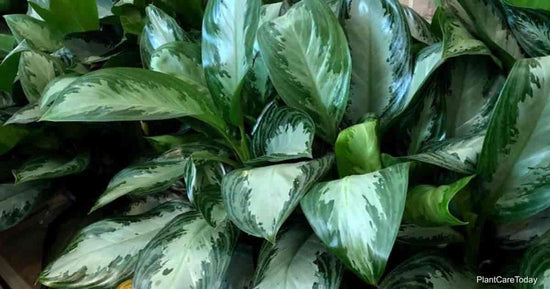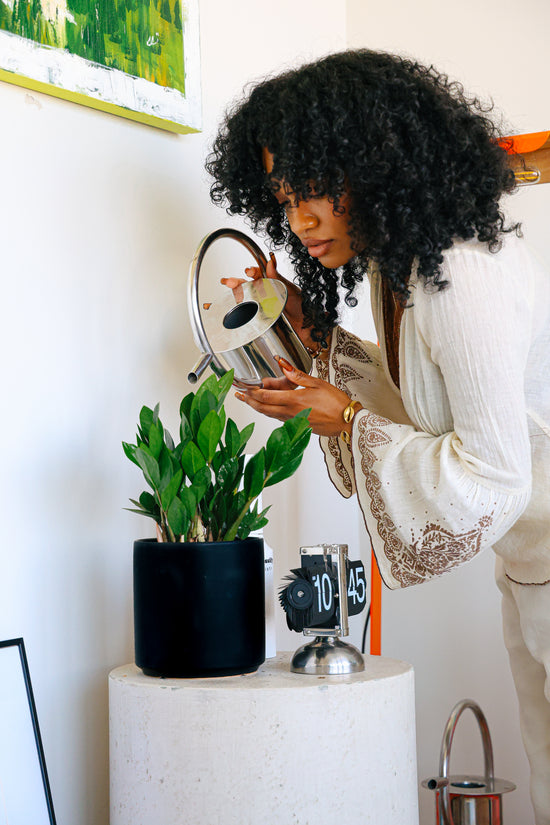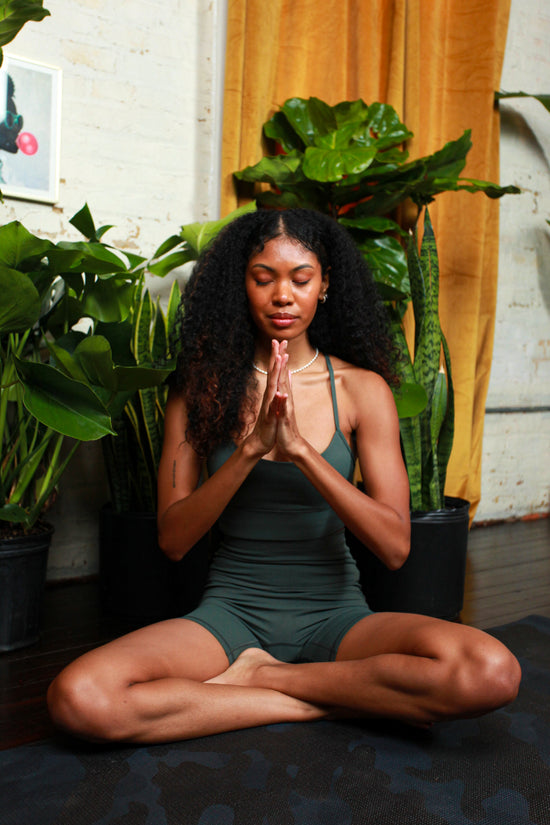A huge component of plant care is simply replicating their environment of origin to the best of our ability. Many of our indoor houseplants originate from warm and humid tropical areas that produce lush greenery. When grown in a greenhouse, young plants are provided superb climate control, nutrients, and care to ensure they arrive in beautiful condition, ready to grow into your home.
While humidity can be an extra step to remember in your plant care routine, there are plenty of tools + tips out there to make this essential need feasible. We’ve got the Grounded Breakdown here:
HOW DOES HUMIDITY BENEFIT PLANTS?
Most indoor air averages between 30%-50% humidity. Using A/C and heat sources throughout the year dries the air further. This is great for succulents and cacti that come from dry regions but is not ideal for plants that need a higher moisture content. In fact, low humidity levels will cause rapid changes to a plant’s appearance and even damage. Proper humidity, on the other hand, has great benefits!
Benefits of humidity to plants:
- Provides additional moisture to the leaf cells
- Helps to retain warmth around the plant
- Works with the plant’s root system to absorb water and nutrients
- Maintains health and appearance, including new growth
Plus, humidity offers some benefits for humans, too. Dry air can cause dry nose and throat sensations that affect our breathing and sleep. We also absorb water in the air to moisturize our skin. Humidity-loving plants in our space encourage us to improve indoor air quality + comfort.
WHICH PLANTS NEED HUMIDITY?
The plants that need the most humidity are those that come from tropical regions. Plants that originate from sub-tropical or desert areas require less humidity and are more tolerant. We include information on the native climate with every plant description and care guide! Succulents and cacti do not need humidity and should avoid humidity sources. Check out our humidity cheat sheet for some of our most popular plants!
Grounded Pro Tip: Group humidity-loving plants near each other to boost their immediate environment even more.
HOW TO IDENTIFY SYMPTOMS OF DRY AIR
Plants typically communicate pretty clearly if they need more humidity in your home. The most common signs are:
- Brown leaf edges or tips
- Leaves begin curling
- New growth is slow to open
- Leaves begin drooping
- Water drops are being discharged by the leaf*
*Transpiration is a natural process of releasing unused water absorbed by the roots. Transpiration is normal and assists photosynthesis, however, it’s typically noticed in drier environments.
METHODS TO PROVIDE HUMIDITY
Ready to give your plants the moisture boost they need to thrive in your space? There are a few methods that suit different preferences and lifestyles. Try one or try them all!
MISTING THE LEAVES
Water droplets spread across the leaves will slowly evaporate and create a humid environment around the plant. Using non-tap water and a mister, spritz the leaves generously during the daytime when there is light + time to dry. The Mossify mistr is an advanced mister that covers a greater surface area with finer droplets, without the work of pumping a spray bottle repeatedly. A must-have tool for anyone boasting tropical greenery!
CREATE A PEBBLE TRAY
Pebble trays hold a shallow layer of water beneath stones that support an elevated planter. The water in the tray slowly evaporates, creating an immediate humid environment. While sanitized, commercial stones/marbles are best, you can get creative with your trays! A large saucer, bowl, or boot tray make great trays. Take a look at how easy creating one is! The key is to ensure the planter’s drainage hole doesn’t touch the water + refill water as needed.
ADD A HUMIDIFIER
Humidifiers can emit a large amount of water vapor throughout the day. They often require distilled or non-tap water and are an excellent option to cover an entire room or a certain corner. Humidifiers can be used in combination or alternation with the above methods if needed.
Note: Air circulation is key when providing humidity to plants. Stagnant air doesn’t allow moist soil or leaves to dry and can produce fungus down the line. Ensure there is some airflow by cracking a window or turning on a fan regularly - especially after watering.






